ELEC 825 Week 1
1/26
Earn XP
Description and Tags
basics of ML with a focus on linear classifiers, Naive Bayes, and SVM
Name | Mastery | Learn | Test | Matching | Spaced | Call with Kai |
|---|
No study sessions yet.
27 Terms
n-fold cross validation
solves problem of noisy estimate of predictive performance when there isn’t enough data for validation
1) split training data into n folds
2) in each run, train on n-1 folds and validate on the remaining 1 fold
3) repeat (2) n times
4) calculate the average performance on the n validation folds
5) select the model that achieves the best average performance
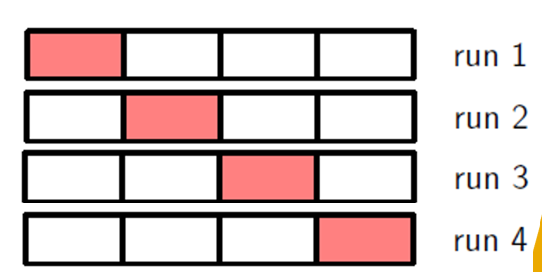
what are the 3 main phases in solving ML problems?
1) training: learning the models.
2) validation: selecting models.
3) testing: evaluating the models you finally obtained above
support vectors
examples closest to the hyperplane
margin
distance between support vectors
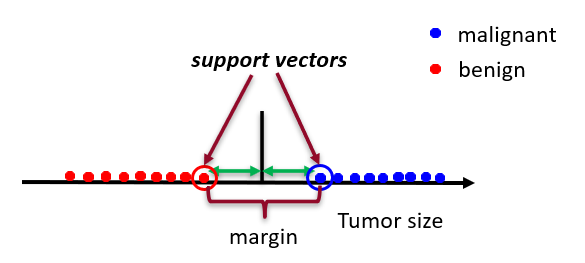
support vector machine (SVM)
maximum-margin classifier that maps data to a higher dimension space (implicitly using kernel)
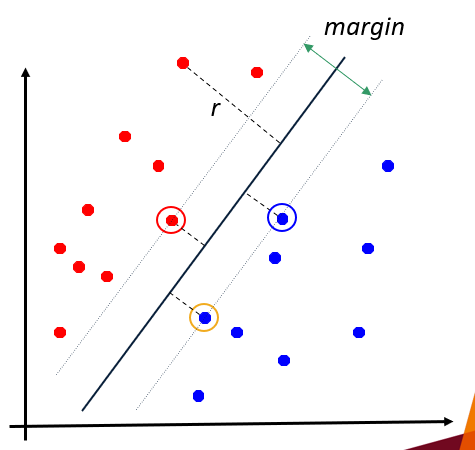
how do you reduce sensitivity to outliers?
by allowing misclassification during training → bias/variance tradeoff
when is the margin largest?
when the hyperplane is halfway between the 2 samples
how do you classify datasets that aren’t linearly separable?
represent the data into a richer (larger) space which includes some fixed, possibly nonlinear functions of the original inputs/measurements
linear classifier
find the line (or hyperplane) which can “best” (under some criterion/objective) separate two classes:
𝑦(𝑥)=𝑊^𝑇 𝑥+𝑏
what are the differences between regression and classification?
1) regression tries to predict a number while classification predicts a category
2) regression identifies many possible outputs while classification only has a small number of possible outputs
machine learning
computer receives the input and expected output to write a program for solving the problem
when do we need machine learning?
when a) human expertise does not exist, b) models are based on huge amounts of data, c) humans can't explain their expertise, d) models must be customized
supervised learning
given training samples and corresponding desired
outputs (labels), predict outputs on future inputs
what are some examples of supervised learning?
classification, regression, time series prediction
unsupervised learning
given training samples without desired outputs, automatically discover representations, features, structures, etc.
learn a function f(x) to explore the hidden structure of x
what are some examples of unsupervised learning?
clustering, low-dimensional manifold learning
reinforcement learning
given sequences of states and actions with
(delayed) scalar rewards/punishments, output a policy
what are some examples of what a learning algorithm can do?
recognizing patterns, generating patterns, recognizing anomalies, prediction
regression
given {x_i, y_i} where x_i E R^D (set of all vectors with d real components) and y_i is a real value, learn a function f(x) to predict y given x
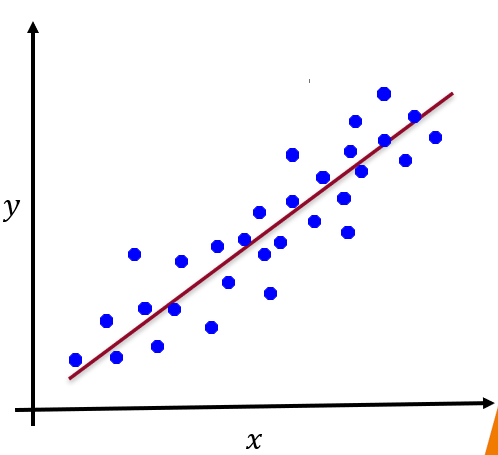
classification
given {x_i, y_i} where x_i E R^D (set of all vectors with d real components) and y_i is categorical, learn a function f(x) to predict y given x
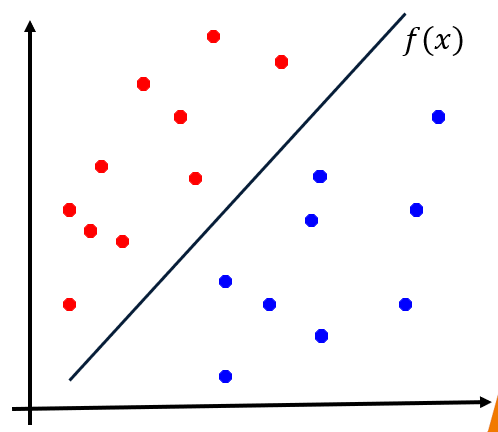
representation learning
a form of unsupervised learning that learns a good representation for the inputs, which is then used for subsequent supervised or reinforcement learning
compact and low-dimensional representation for inputs
outlier detection
a form of unsupervised learning that detects highly unusual cases from the given data
rule learning
a form of unsupervised learning that learns rules from the data
feature space
multidimensional space where each dimension represents a different feature or characteristic of data
feature normalization
process of transforming numerical features to a standard scale, usually between 0 and 1, to ensure fair comparison and prevent dominance of certain features in machine learning models
what are the steps to Naive Bayes Theorem for discrete features?
1) sort data cases into bins according to Ck
2) compute class prior p(Ck) using frequencies
3) for each class, estimate the distribution of ith variable/feature: 𝑝(𝑥_𝑖│𝐶_𝑘 )
4) compute the posterior
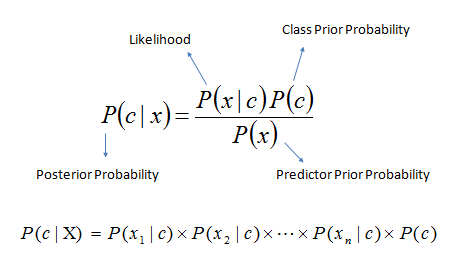
how do you deal with continuous features if using Naive Bayes Theorem?
discretization OR fit a known distribution